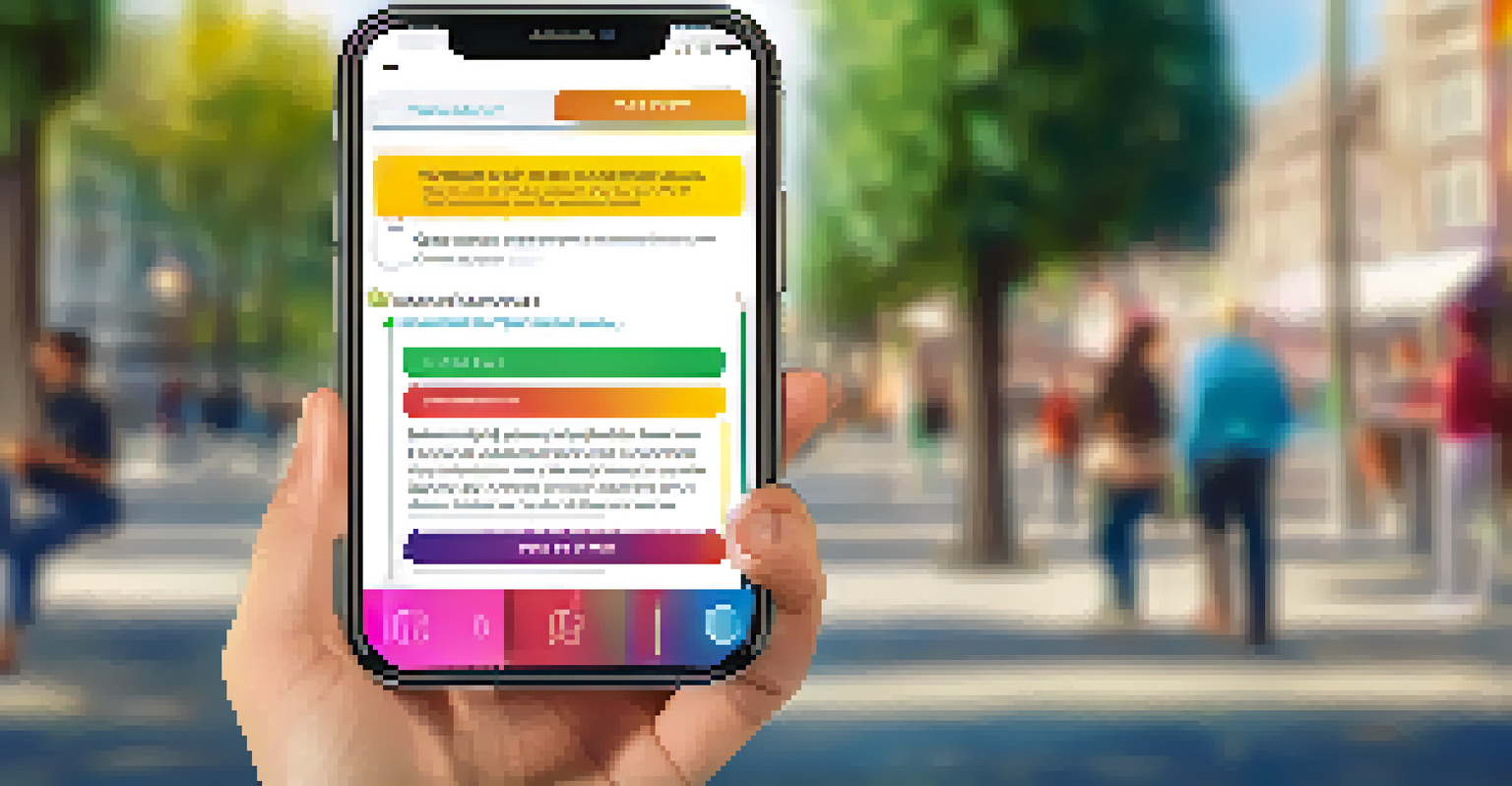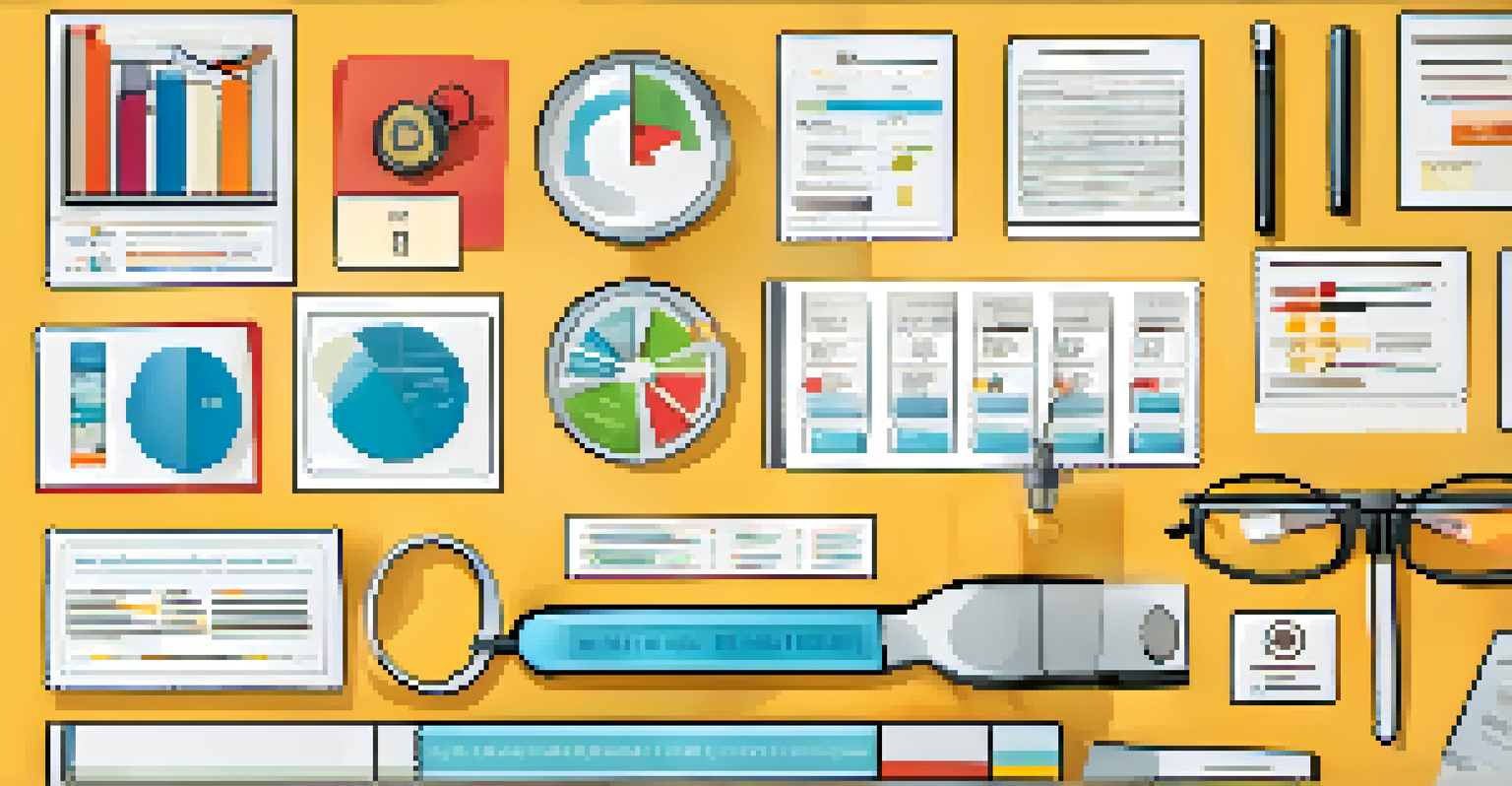Utilizing Self-Report Tools for Addiction Screening Success

Understanding Self-Report Tools in Addiction Screening
Self-report tools are questionnaires designed to gather personal insights about an individual's substance use. They play a crucial role in addiction screening by enabling individuals to reflect on their behaviors and attitudes towards substances. These tools can range from simple surveys to comprehensive assessments, making them versatile for various settings.
Self-reflection is the key to personal growth, and self-report tools provide a vital avenue for individuals to evaluate their substance use honestly.
One of the primary advantages of self-report tools is their accessibility. They can be administered in person, online, or through mobile applications, catering to different preferences and situations. This flexibility helps reach a broader audience, ensuring that more individuals have the opportunity to assess their substance use honestly.
Moreover, self-report tools promote self-awareness, allowing individuals to confront their habits in a non-judgmental environment. This personal reflection can be the first step toward seeking help, making these tools not just a screening mechanism but also a catalyst for change.
The Importance of Accurate Self-Reporting
Accurate self-reporting is vital for effective addiction screening, as it directly influences the assessment's reliability. Individuals may sometimes underreport or overreport their substance use due to stigma or fear of judgment. Addressing these concerns can enhance the honesty of responses and improve the overall effectiveness of the screening process.

Encouraging an open dialogue about addiction can help individuals feel more comfortable sharing their experiences. Health professionals should foster a supportive atmosphere that emphasizes confidentiality and understanding. This way, individuals are more likely to provide truthful answers, leading to better screening outcomes.
Self-Report Tools Enhance Awareness
Self-report tools promote self-reflection and awareness about substance use, serving as a crucial first step toward seeking help.
Additionally, using validated self-report tools with clear instructions can guide individuals in providing accurate information. These tools are often designed to minimize ambiguity and confusion, making it easier for users to reflect on their behaviors honestly.
Types of Self-Report Tools Available
There are several self-report tools available for addiction screening, each tailored to different needs and contexts. Common examples include the Alcohol Use Disorders Identification Test (AUDIT) and the Drug Abuse Screening Test (DAST), which assess specific substance use patterns. These standardized tools are backed by research, ensuring they effectively identify potential issues.
The first step toward change is awareness. The second step is acceptance.
Some tools focus on general substance use trends, while others delve into specific behaviors, such as binge drinking or prescription medication misuse. This variety allows healthcare providers to select the most appropriate tool based on individual circumstances, ultimately leading to more accurate assessments.
Furthermore, many self-report tools incorporate various formats, including multiple-choice questions, Likert scales, and open-ended responses. This diversity not only keeps the assessment engaging for users but also helps capture a more comprehensive picture of their substance use.
Integrating Self-Report Tools with Clinical Assessments
While self-report tools are invaluable, they are most effective when integrated with clinical assessments. Healthcare professionals can use the data from self-reports as a foundation for more in-depth discussions during clinical evaluations. This combination ensures a holistic approach to understanding an individual's addiction risk.
For instance, a clinician might use a self-report tool to identify initial concerns and then follow up with targeted questions during a face-to-face assessment. This layered approach allows for a more nuanced understanding of an individual’s substance use patterns and any underlying issues.
Accurate Reporting is Essential
Honest self-reporting is vital for effective addiction screening, as it directly influences the reliability and outcomes of assessments.
Moreover, clinicians can provide immediate feedback based on self-report results, addressing any misconceptions and offering resources for support. This collaboration between self-reporting and clinical practice can significantly enhance the screening process and lead to better outcomes for individuals.
Challenges in Self-Reporting for Addiction Screening
Despite the benefits, there are challenges associated with self-reporting in addiction screening. Social desirability bias, where individuals provide responses they believe are more acceptable, can skew results. This phenomenon can lead to underreporting of substance use, ultimately compromising the effectiveness of the screening.
Additionally, individuals may lack awareness of their substance use patterns, particularly in cases of addiction. This lack of insight can result in inaccurate reporting, making it essential for health professionals to guide individuals through the self-reporting process. Providing education about addiction can empower users to make more informed self-assessments.
Lastly, language barriers and varying literacy levels can also pose challenges. It's crucial to ensure that self-report tools are available in multiple languages and are presented in an easily understandable format to reach a wider audience.
The Role of Technology in Self-Report Tools
Technology has transformed the landscape of self-report tools for addiction screening. With the rise of mobile apps and online questionnaires, individuals can now assess their substance use conveniently and anonymously. This shift not only makes self-reporting more accessible but also encourages a broader range of individuals to participate.
Moreover, technology can enhance the user experience by incorporating interactive elements, such as personalized feedback and progress tracking. These features can motivate users to engage with the screening process actively, fostering a sense of accountability in their journey toward understanding their substance use.
Technology Boosts Accessibility
The integration of technology in self-report tools makes addiction screening more accessible and engaging for a wider audience.
Additionally, technology allows for the collection of data that can be analyzed for trends and patterns in substance use. This information can be invaluable for researchers and healthcare providers, helping to identify areas where additional support and resources are needed.
Future Directions for Self-Report Tools in Addiction Screening
The future of self-report tools in addiction screening looks promising, with ongoing advancements aimed at improving their effectiveness. Continued research is essential to develop more nuanced tools that can adapt to changing patterns of substance use. This evolution will ensure that self-report tools remain relevant and useful in addressing the complexities of addiction.
Moreover, integrating artificial intelligence (AI) and machine learning could enhance the personalization of self-report tools. These technologies can analyze user responses and offer tailored recommendations for support, making the screening process more engaging and impactful.

Finally, as societal attitudes toward addiction continue to evolve, there is an opportunity to reduce stigma through education and awareness campaigns. Promoting the importance of self-report tools can encourage individuals to take the first step towards understanding and addressing their substance use.